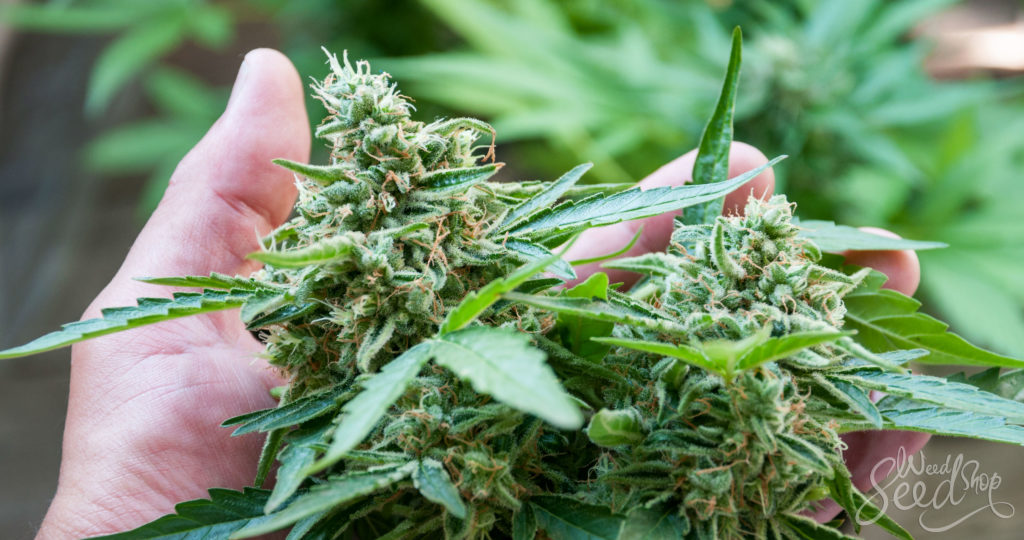How fast do autoflowering seeds grow? Can autoflowering seeds grow indoors and outdoors? Those, and more questions about autoflowering seeds answered here.
Autoflowering cannabis seeds produce female plants that flower automatically at 2-4 weeks of age. They are bred to flower independently of a light schedule. This differs from regular and feminized seeds (photoperiod flowering), which rely on the correct light cycle (12/12) to begin flowering.
Autoflowering strains are popular with growers who:
• Want a quick and low-maintenance harvest
• Are situated in colder climates (Northern Hemisphere) with short summers and fewer hours of sunlight in a day
• Are growing indoors with a limited grow-space
• Have limited energy or time
• Are new to growing and have little experience
• Don’t want to separate male plants from female plants (sexing)
Growing autoflowering cannabis seeds is convenient both indoors and outdoors. First, germinate the seeds. Plant seedlings in a light and aerated grow medium. For indoor plants, simply set the light schedule to follow 18/6 (18 hours on, 6 hours off) until they are ready to harvest. Outdoor autoflowering plants are ready to harvest within 8-10 weeks of temperatures above 10°C.
Most autoflowering seeds are ready to harvest 8-10 weeks after planting, some even sooner. Their vegetative periods are short, and they will flower regardless of the photoperiod. Plus, they require less attention and fewer nutrients than regular or feminized seed varieties.
Yes, autoflowering seeds can be grown indoors and outdoors. Autoflowering seeds are favoured by growers in colder climates who are restricted by short summers. This is because they grow fast, are compact in size and don’t require a switch in light schedule.
Indoors, autoflowering seeds can be grown any time of the year. Outdoors, autoflowering seeds can be planted as early as March/April, and in warmer climates, as late as the beginning of August.
Autoflowering seeds are created by cross breeding female plant genetics (indica and sativa) with the ruderalis gene. The addition of the ruderalis gene produces the autoflowering trait. Native to areas of Central Asia, Eastern Europe, and Russia, where conditions are cold and extremely harsh, the ruderalis species grows wild.






